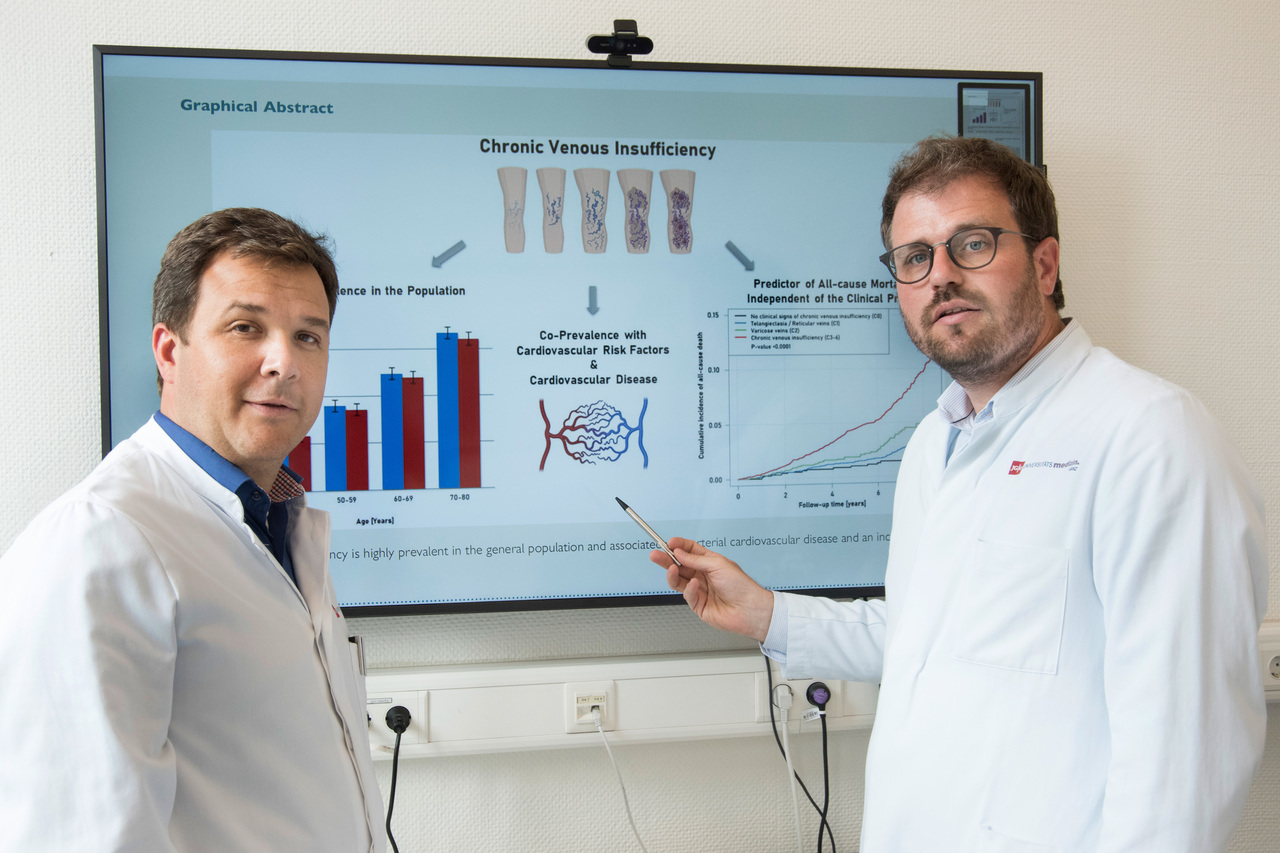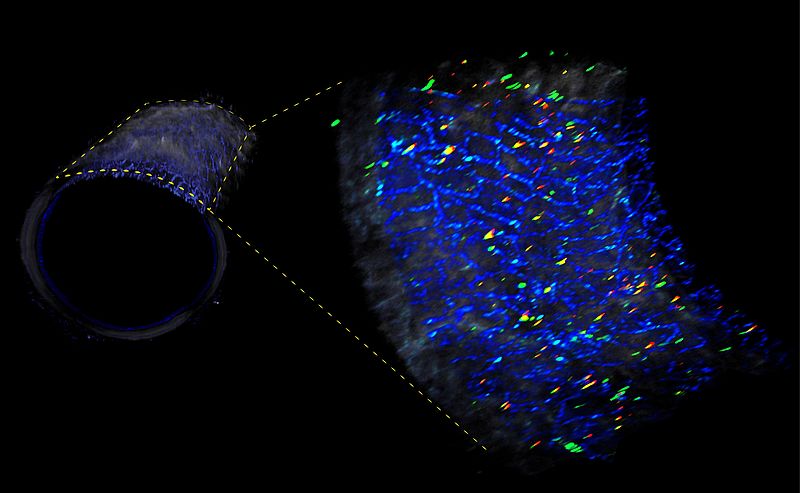Chronic venous insufficiency is a disease of the leg veins that can lead to severe changes in the veins and skin, including chronic wounds. So far, the disease has been viewed primarily as an aesthetic and local problem of the veins. However, new data shows that it increases the risk of developing and dying from cardiovascular disease.
Venous diseases are very common
"Our study is the first and most extensive population-based study that systematically examines the entire spectrum of venous insufficiency and evaluates it in connection with established cardiovascular diseases," explains Dr. Jürgen Prochaska, senior physician at the Center for Cardiology at the Mainz University Medical Center and working group leader at the CTH.”
“We were able to show that chronic venous insufficiency is extremely widespread: Around 41 percent of the 40 to 80-year-old subjects in the population-based Gutenberg Health Study (GHS) developed symptomatic chronic venous insufficiency with edema, skin changes or open wounds on the lower limbs diagnosed. ”The study data show that the frequency of chronic venous insufficiency increases significantly with increasing age. While more than one in five of the 40 to 50 year olds is affected, it is even more than two thirds of the 70 to 80 year olds. Another finding of the study: women get sick a little more often than men.
The Mainz research team also found that people with chronic venous insufficiency are about 60 percent more likely to have severe cardiovascular disease at the same time than people of the same age and gender without CVI. The scientists were also able to show that the risk of developing cardiovascular diseases such as heart attack, stroke, heart failure or the cardiac arrhythmia atrial fibrillation in the next ten years is almost twice as high for people with CVI as for people with no signs of venous insufficiency..
Mortality from advanced venous insufficiency increased 1.7-fold
"Our data reveal another alarming finding," emphasizes Univ.-Prof. Dr. Philipp Wild, Head of Preventive Cardiology at the Center for Cardiology at the University Medical Center Mainz and Head of Clinical Epidemiology and Systems Medicine at the CTH. “In the study, we have shown that overall mortality across all causes of death is significantly higher in people with chronic venous insufficiency, regardless of all other factors such as age, gender, risk factors and comorbidities. In connection with its high prevalence, this underlines the need to take the disease seriously and use it as a possible indicator of the presence of a cardiovascular disease , 7 times higher than in people without this condition.
High blood pressure, diabetes, obesity, and smoking also damage the veins
The director of the Center for Cardiology at the Mainz University Medical Center, Univ.-Prof. Dr. Thomas Münzel, sees the common cardiovascular risk factors as a possible cause for the connection between arterial and venous disease: "Our data indicates that classic risk factors for cardiovascular disease, for example high blood pressure, diabetes mellitus, obesity or smoking, too contribute to advanced venous insufficiency. When diagnosing chronic venous insufficiency, one should therefore always look for risk factors and cardiovascular diseases. "
The scientists systematically classified the findings on the venous changes according to their severity. These ranged from no signs of a venous change to the presence of very advanced venous insufficiency. A clear majority of around 90 percent showed a change in the veins: 36.5 percent of the people had a so-called varicosis (e.g. spider veins) and 13.3 percent had varices (varicose veins). Both are venous changes that often lead to advanced venous weakness in the course of life. With a proportion of 40.8 percent of all examined persons, a high proportion had manifest chronic venous insufficiency.
For the study, the data of around 12,400 participants in the Gutenberg Health Study (GHS) from Mainz and the Mainz-Bingen district and of more than 2,400 participants in the MyoVasc study were taken into account. The severity of a vein change was determined by means of standardized digital image recording, a clinical examination of the legs and a questionnaire on typical symptoms. In addition, data on cardiovascular risk factors and comorbidities were available for all study participants.
Original Study:
Chronic venous insufficiency, cardiovascular disease, and mortality: a population study. Prochaska et al. Eur Heart J. 2021 Aug 13:ehab495. Online ahead of print. PMID: 34132336.


